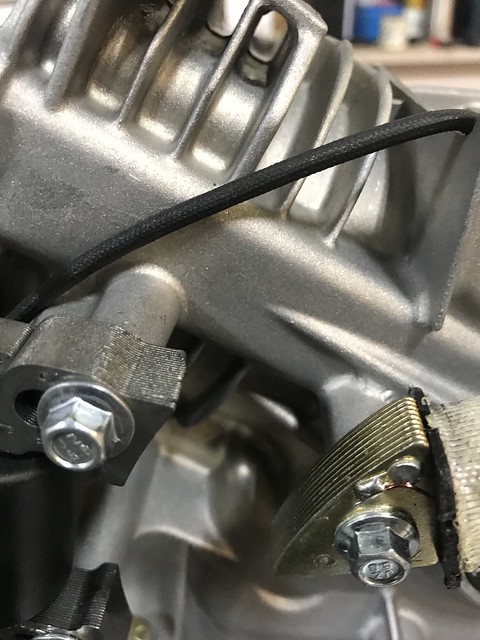thedude306
sled guy
Hi all,
I'm modifying snowmobiles for the kids and have purchased and installed Pro Point 208 cc electric start engines. These go on sale and have a cast iron sleeve. They appear to be a great little engine.
https://www.princessauto.com/en/detail/208cc-ohv-gas-engine-with-electric-start/A-p8628257e
I have acquired a bunch of parts from NR Racing treating these engines like a typical 6.5hp clone.
The red sled is a 2000 Polaris XCR 120 the blue sled is a 2018 Polaris Indy 120 that I long tracked. OEM engines are a Roblin 120cc. Both chassis got the Pro Point 208 engine.


here's a quick video of them in action.
https://youtu.be/wqFvc2AXkzY
SOOO
The Problem: I need more charging capacity to charge the battery and run the handle bar warmers. These engines have electric start that works pretty well. They have a charging coil on them that produces about an amp at 13.3 volts DC or so at 3900 RPM. (more volts at higher RPM) The Handle bar warmers and LED lights draw about 2.8 amps. I only get about a day of running the sleds and I need to hook up to a battery charger.
My Solution: Install dual 3 amp charging coils. With the governor removed I am getting about 28V DC. No problem, I'll add a DC-DC regulator.
My Question: I know I need to install a diode coming off the charging coils so that they don't see voltage from the battery. BUT, do I need to isolate each charging coil individually with a diode or can I hook them together and then run one diode? Also, Is it better to hook up the diode AFTER the DC-DC as I assume it will draw power from the battery. My plan is to hook the coils together, have them input to the regulator and then have a diode on the output to stop back feeding from the batteries.


I'm modifying snowmobiles for the kids and have purchased and installed Pro Point 208 cc electric start engines. These go on sale and have a cast iron sleeve. They appear to be a great little engine.
https://www.princessauto.com/en/detail/208cc-ohv-gas-engine-with-electric-start/A-p8628257e
I have acquired a bunch of parts from NR Racing treating these engines like a typical 6.5hp clone.
The red sled is a 2000 Polaris XCR 120 the blue sled is a 2018 Polaris Indy 120 that I long tracked. OEM engines are a Roblin 120cc. Both chassis got the Pro Point 208 engine.


here's a quick video of them in action.
https://youtu.be/wqFvc2AXkzY
SOOO
The Problem: I need more charging capacity to charge the battery and run the handle bar warmers. These engines have electric start that works pretty well. They have a charging coil on them that produces about an amp at 13.3 volts DC or so at 3900 RPM. (more volts at higher RPM) The Handle bar warmers and LED lights draw about 2.8 amps. I only get about a day of running the sleds and I need to hook up to a battery charger.
My Solution: Install dual 3 amp charging coils. With the governor removed I am getting about 28V DC. No problem, I'll add a DC-DC regulator.
My Question: I know I need to install a diode coming off the charging coils so that they don't see voltage from the battery. BUT, do I need to isolate each charging coil individually with a diode or can I hook them together and then run one diode? Also, Is it better to hook up the diode AFTER the DC-DC as I assume it will draw power from the battery. My plan is to hook the coils together, have them input to the regulator and then have a diode on the output to stop back feeding from the batteries.









